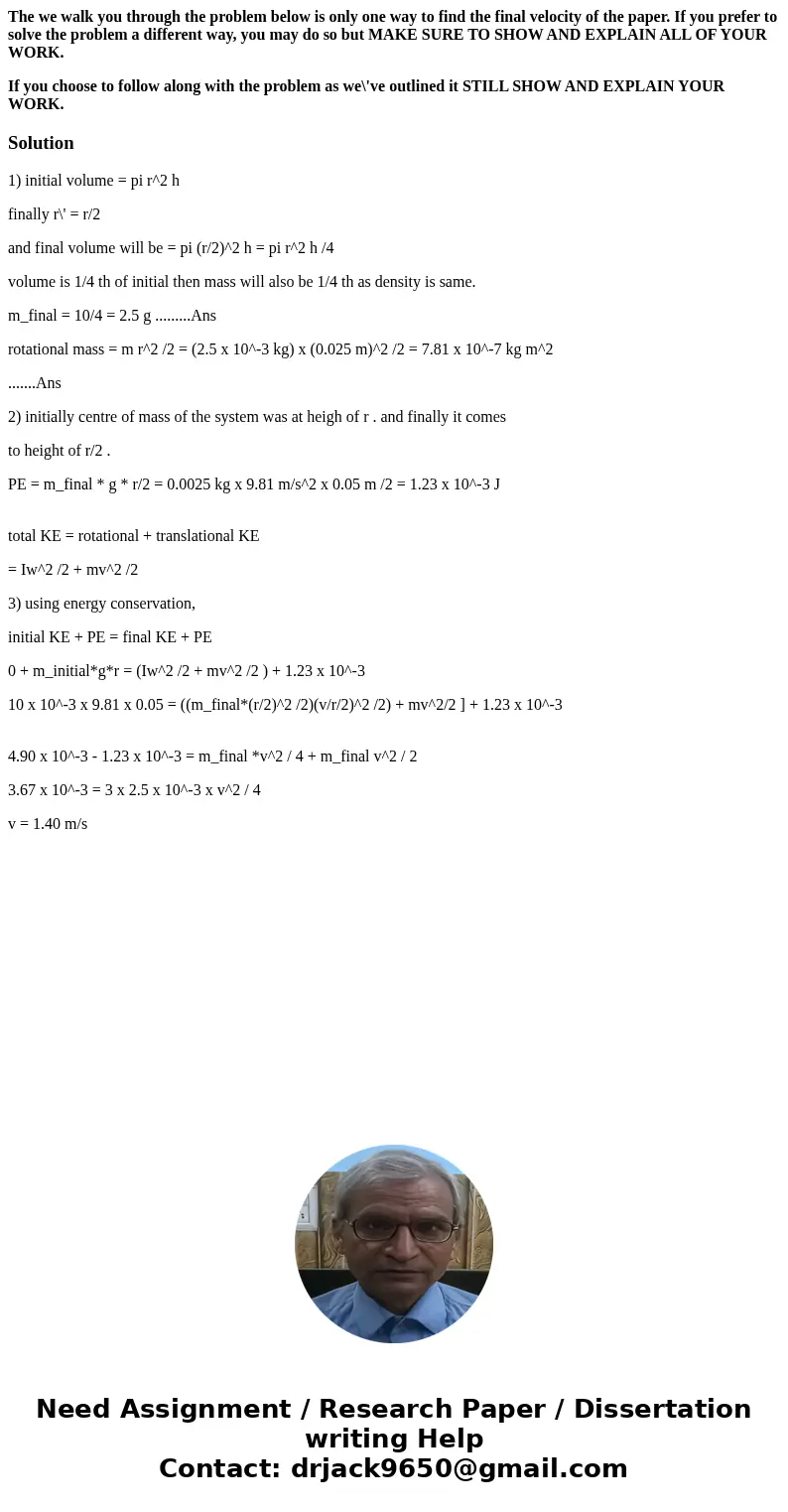The we walk you through the problem below is only one way to
The we walk you through the problem below is only one way to find the final velocity of the paper. If you prefer to solve the problem a different way, you may do so but MAKE SURE TO SHOW AND EXPLAIN ALL OF YOUR WORK.
If you choose to follow along with the problem as we\'ve outlined it STILL SHOW AND EXPLAIN YOUR WORK.
Solution
1) initial volume = pi r^2 h
finally r\' = r/2
and final volume will be = pi (r/2)^2 h = pi r^2 h /4
volume is 1/4 th of initial then mass will also be 1/4 th as density is same.
m_final = 10/4 = 2.5 g .........Ans
rotational mass = m r^2 /2 = (2.5 x 10^-3 kg) x (0.025 m)^2 /2 = 7.81 x 10^-7 kg m^2
.......Ans
2) initially centre of mass of the system was at heigh of r . and finally it comes
to height of r/2 .
PE = m_final * g * r/2 = 0.0025 kg x 9.81 m/s^2 x 0.05 m /2 = 1.23 x 10^-3 J
total KE = rotational + translational KE
= Iw^2 /2 + mv^2 /2
3) using energy conservation,
initial KE + PE = final KE + PE
0 + m_initial*g*r = (Iw^2 /2 + mv^2 /2 ) + 1.23 x 10^-3
10 x 10^-3 x 9.81 x 0.05 = ((m_final*(r/2)^2 /2)(v/r/2)^2 /2) + mv^2/2 ] + 1.23 x 10^-3
4.90 x 10^-3 - 1.23 x 10^-3 = m_final *v^2 / 4 + m_final v^2 / 2
3.67 x 10^-3 = 3 x 2.5 x 10^-3 x v^2 / 4
v = 1.40 m/s

 Homework Sourse
Homework Sourse